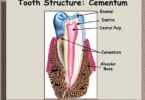Mitochondria and mitochondrion are the same things. There is no Difference between Mitochondria and Mitochondrion except that the former is plural and latter is singular. Mitochondria are considered the power house of the cell because it makes energy that is required by the cell.
Also See: Difference between Chromosomes and Chromatids
Mitochondria: Definition and Functions
It is a double membrane structure in the cell that is present in eukaryotic cells. In some cells, mitochondria are not present such as the red blood cells which do not have any organelles. Some unicellular organisms also have mitochondria, such as diplomonads and microsporidia.
Mitochondria is responsible for generating ATP in the body which are the energy packets, providing chemical energy for cells’ metabolism. The size of mitochondria is between 0.75 and 3 micrometers. Under the microscope, mitochondria cannot be seen unless they are stained.
Mitochondria do not only provide energy to the cell but they also play a role in cellular differentiation, signaling and also in apoptosis, which is cell death. Cell cycle and cell growth also require mitochondria for proper operation. There are implications of mitochondria in many diseases such as heart failure, cardiac dysfunction, and autism.
The number of mitochondria in different cells vary. For example, liver cells have over 2000 mitochondria. On the other hand, there are no mitochondria in the red blood cells. There are different compartments in the mitochondria, including cristae, matrix, outer membrane, inner membrane, and intermembrane space.
Mitochondrion: Definition and Functions.
The only Difference between Mitochondria and Mitochondrion is of plurality. Along with the nucleus, DNA is also present in the mitochondria. This DNA comes from the mother and is found in the mitochondrion. This organelle has its own genome and proteins are made from this genome. There are 615 proteins that are made from cardiac mitochondrion and 940 rat proteins are made from the mitochondrial genome.
The origin of the mitochondrion is attributed to two hypotheses. The endosymbiotic hypothesis states that mitochondrion were prokaryotic cells and they had the machinery for performing oxidative phosphorylation that eukaryotic cells could not perform. So, they lived inside eukaryotic cells.
According to the autogenous hypothesis, mitochondria were formed when a portion or DNA split off from the nucleus when prokaryotes and eukaryotes diverged. Then, this portion got enclosed by membranes. Mitochondrion has circular chromosomes in it and these genes code for redox proteins that are involved in respiratory processes. The structure of mitochondrion is as follows:
- The outer membrane that has different properties than inner membrane
- The inter membrane space that is between two membranes
- Inner membrane with its own distinct properties
- Cristae which are formed when inner membrane folds
- Matrix, the space that is in inner membrane
Summary of Difference between Mitochondria and Mitochondrion:
- There is no Difference between Mitochondria and Mitochondrion as they are the same.
- Mitochondria are composed of two membranes folded structure and genome.
- The mitochondrial genome also codes for different proteins, all of which come from the mother.
- The mitochondrial genome is used for evolutionary studies since it tracks back to mothers.
- This organelle is involved in cellular regulation, cell cycle, energy production, and cell differentiation.







Leave a Comment
You must be logged in to post a comment.